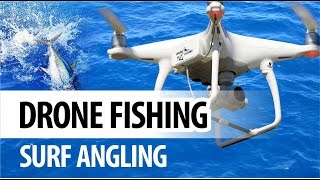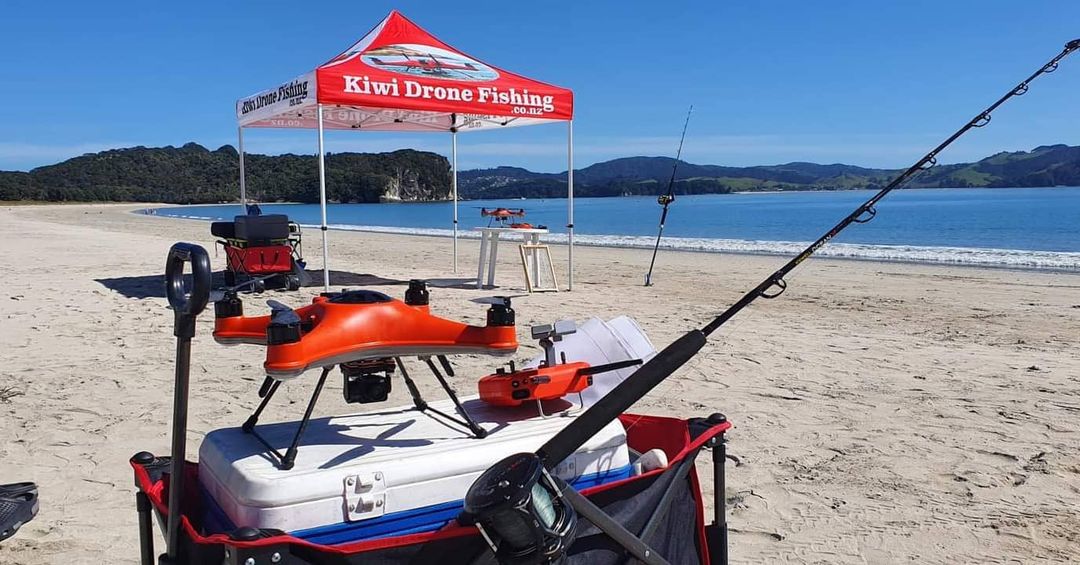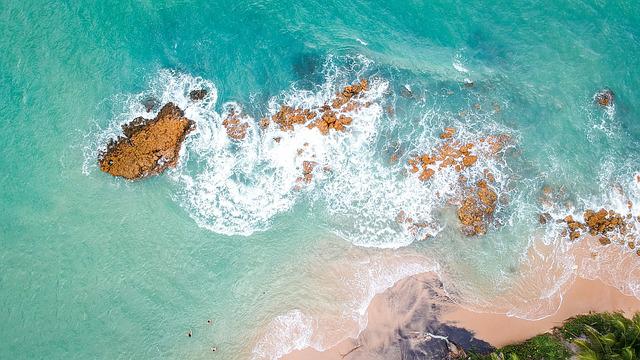
A new fishing style has emerged in New Zealand: drone fishing! This exciting new technique uses the latest in drone technology. It opens up a new world of fishing options. If you are interested in purchasing a fishing drone, you can buy a DJI or Splash drone from leading retailers like Drone Fishing NZ. GoFish cams, Splash drones, and custom built fishing rigs are also available.
Aerokontiki Drones
Sharkan makes the Fishhawk fishing drone, which captures a clearer picture of what you're doing. The stabilized camera of the drone can take 12-megapixel photos as well as 4k UHD videos at 30 frames per seconds. The videos can also be viewed from your smartphone. The drone is capable of flying for up to 23 mins, has a spare lithium battery, and has a long transmission range.
Mobula
Mobula drones were specifically created for fishing. It is buoyant and IP56-rated. This means that it can withstand wind speeds up to 20 knots. It also has built-in safety features, including automatic return to home, automatic payload release, and 3 different release mechanisms. A water-returning feature means that your drone will always return to the surface if its battery dies.
Banks'
The popularity of fishing drones has increased, drawing the attention of anglers as much as those who are interested in it. But, drones can have their own problems. In the first instance, a drone is not suitable for fishing in water that is too deep. A second problem arises when a drone crashes in the same location a second time. You can't always rely on the information in the video if that happens.

SplashDrone 4
Swellpro has designed the SplashDrone 4 with a brand new float platform for water sports and recreational purposes. It's ideal for fishing parties, all kinds of water activities and is made from corrosion-resistant materials and high-quality ABS to withstand any conditions. The SplashDrone 4's patented Smooth+ flight control system gives the user complete control over the drone, which helps keep it stable in any situation. Its advanced technology allows it to capture every angle and every moment from the sky.
Drone for fishermen
If you're a New Zealand Fisherman Drone fisherman, then you're in for a real treat. For drone fishing enthusiasts, snappers are highly prized. They are not only stunning to look at but also taste amazing! These fish are often found near the North and South island coasts. They often congregate during the springtime when they spawn. These fish can also be caught during the summer months as they are abundant in the autumn.
Flying a Drone
These guidelines will help you ensure a successful trip if you plan to fly a drone to fish in New Zealand. You must be familiar with the law. It's illegal to fly a drone over any marine life or within 500 meters of a marine mammal. It is important to pay attention to your surroundings while flying your drone. This will prevent your expensive drone from being confiscated.
Payload of a drone
A drone can be used for fishing. However, you need to consider the payload. It is important to choose a drone that has the payload capacity to transport heavy fish, and can fly for long periods of time. If you are only going to fly your drone for just a few moments, you will probably not be able to catch enough fish. Luckily, the technology behind drone fishing in New Zealand is getting better.

FAQ
How can I keep drones from my home?
Drones are becoming more popular for home security and surveillance. You can prevent drone attacks by installing motion sensors around your home and using them to detect any unauthorised flying objects.
What laws apply to flying drones?
The Federal Aviation Administration (FAA), oversees all aspects of drone operation in the United States. You must first obtain a FAA certification before you can operate a drone commercially. You must then complete a course on piloting skills and pass an examination. You will then need to pay an agency fee.
Can I fly my drone around my neighborhood?
Yes! These are called UAVs (unmanned aircraft vehicles). There are several types of drones available for sale today, from small quadcopters to large fixed-wing aircraft. The FAA has recently issued new rules regarding the commercial use of UAVs, which means you can now legally fly them for business purposes. However, be aware that flying a UAV near airports may cause interference with air traffic control systems, and you must obtain permission from local authorities before operating one.
Statistics
- According to Indeed, a drone pilot gets paid $25.73 per hour on average in the US. (dronesgator.com)
- According to industry research from ZipRecruiter , there are 10 cities where the typical salary for a Drone Pilot job is above the national average. (dronesgator.com)
- Research and Markets predict a growth rate of 51.1% over the next five years. (thedroneu.com)
External Links
How To
How to Fly Drones for Beginners
A drone is a remotely-controlled aircraft that is used for aerial photography and surveillance. Drone technology has been around since World War II. DJI introduced their Phantom series of quadcopters in 2010, but commercial use only began in 2010. There have been many types of drones since then, including beginner-friendly drones like the Parrot AR Drone 2.0 and professional-grade multi-rotor crafts like the DJI Mavic Pro.
There are several ways to fly a drone, including;
-
Remote control: This uses a remote control device that attaches to your hand and allows you control the drone along its flight path. There are two main types, On/Off switches (like radios) and joysticks.
-
Manual Control - Using a smartphone app, this method allows users to remotely operate the drone via GPS coordinates. The app will provide instructions and help you to locate the drone.
-
Autonomous Flight - This method involves leaving the piloting duties to the drone itself. It is basically flying autonomously and without human intervention. For the autonomous flight to occur, the drone must have a built-in camera and sensors capable of capturing images and data.
-
Triggered flight - This is similar to manual control except that the pilot sets up a preprogrammed route and the drone follows the route until it reaches its destination. The drone automatically lands once the route has been completed and returns to the base.
-
Landing Gear- Some drones include landing gear that allows for safe landing if the power goes out or they run out of batteries.
-
Goggles - Some pilots wear goggles to protect themselves from debris while operating.
-
Camera – Some drones have cameras, which allow you to take photos or videos from up high.
-
Obstacles: Some drones are equipped with obstacle avoidance systems to prevent them from hitting obstacles.
-
Speed - Some drones can travel at speeds over 40 mph.
-
Battery Life – Most drones will last 20 minutes to three hours depending on how powerful they are.
-
Range - Some drones can travel upto 30 miles depending on their models.
-
Power source - Some drones need an external power source, while others use internal batteries.
-
Weight - Some drones weigh less than 1 pound, whereas other models weigh up to 4 pounds.
-
Size - Drones come in many sizes, from small gadgets that fit in one's hands to large craft that weigh more than 50 lbs.
-
Price - Drones come in a variety of price categories, including high-end models which can run into the thousands and low-cost options that can start at $100.